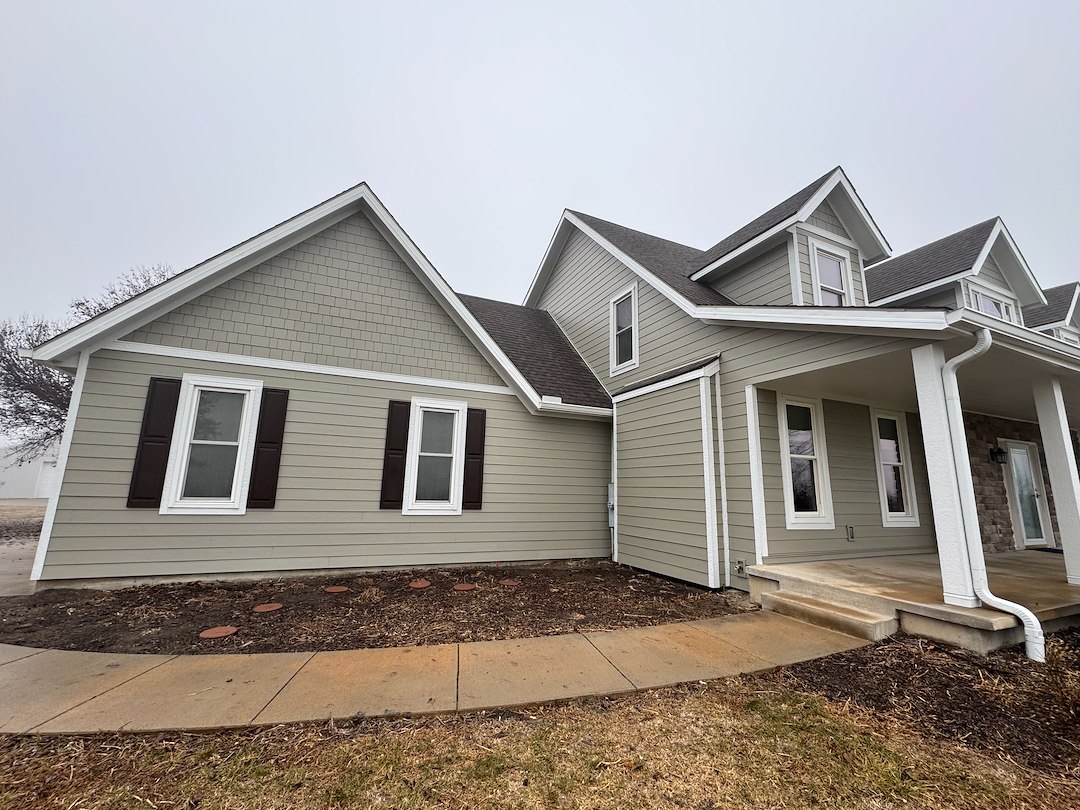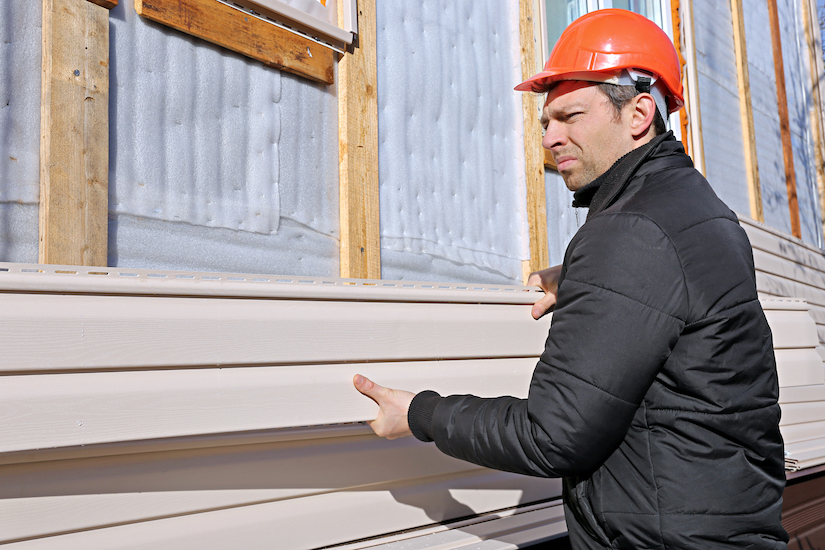The Essential Guide to the Numerous Sorts Of Home Siding and Their Special Benefits
In the world of home improvement, choosing the best home siding is an essential choice that affects both aesthetic appeal and practical efficiency. The selection of materials offered, such as wood, plastic, fiber brick, steel, and cement, each offer unique advantages that accommodate various requirements and preferences. Understanding these distinctions can substantially boost the long life and value of a building - morris siding contractor. With so lots of options to think about, which home siding material absolutely stands out for your details project? Discovering these choices can lead to informed decisions that line up with both style and practicality.
Timber House Siding
Timber exterior siding, a prominent option for residential exteriors, supplies an ageless visual that incorporates natural elegance with architectural integrity. This exterior siding product is offered in different styles, consisting of clapboard, shingles, and board-and-batten, permitting homeowners to personalize their façade to match their design preferences. Timber siding is usually crafted from sturdy types such as cedar, redwood, or pine, which are understood for their strength and ability to withstand environmental stress factors.
Among the main advantages of timber house siding is its outstanding insulation residential properties, which can add to energy performance and reduced heating expenses. Furthermore, wood siding is naturally degradable, making it an eco-friendly option when sourced sustainably. Routine upkeep, consisting of paint or staining, can extend its life-span and improve its look, enabling home owners to protect the all-natural appeal of the timber.
Nonetheless, possible drawbacks include susceptibility to pests, rot, and climate damage, necessitating ample therapy and upkeep - morris siding contractor. In spite of these worries, when properly taken care of, wood siding can offer a attractive and long lasting solution that boosts the personality of a home while offering a warm, inviting atmosphere

Plastic House Siding
Plastic exterior siding has actually arised as a leading option for home owners looking for a low-maintenance exterior alternative that integrates durability and cost. This flexible material is crafted from polyvinyl chloride (PVC), making it immune to numerous weather, consisting of wetness and UV rays. Therefore, vinyl home siding does not warp, rot, or fade, ensuring long-lasting aesthetic allure.
One of the key benefits of vinyl siding is its substantial range of shades and designs, enabling property owners to achieve the preferred search for their residential or commercial property without the requirement for frequent repainting. Furthermore, vinyl siding is easy to set up, which can dramatically minimize labor costs during construction or remodelling tasks.
Plastic exterior siding additionally adds to power effectiveness. Several choices function insulation support, which improves thermal performance, aiding to preserve comfortable interior temperature levels and potentially lowering energy expenses. Furthermore, its smooth surface helps with simple cleansing, requiring just periodic cleaning with a garden hose to remove dust and debris.
Fiber Concrete Exterior Siding
Fiber concrete house siding has acquired traction amongst house owners and home builders alike because of its remarkable combination of sturdiness and visual convenience. Composed of a blend of cellulose, cement, and sand fibers, this siding option is crafted to endure severe climate condition, consisting of high winds, hefty rainfall, and temperature level fluctuations, making it a long-lasting selection for domestic outsides.

One of the key advantages of fiber cement home siding is its resistance to insects, such as termites, and its non-combustible nature, offering boosted fire security. morris siding contractor. Additionally, it is readily available in a large variety of textures, shades, and styles, enabling homeowners to attain their preferred visual without compromising efficiency
Another benefit is its low upkeep requirements; fiber cement exterior siding usually calls for paint or staining every 5-10 years, which is navigate here less frequent than various other materials. Its long life adds to a reduced overall cost of possession, as it lowers the demand for frequent repair services or substitutes.
Eventually, fiber concrete home siding stands for an exceptional investment for those looking for a durable, attractive, and versatile exterior alternative, combining both type and function to enhance the home's curb allure.
Steel Siding
The allure of steel house siding hinges on its durable longevity and contemporary aesthetic allure, making it a favored selection for modern architecture. Offered in materials such as aluminum and steel, steel siding uses a variety of shades and surfaces, permitting house owners to achieve a tailored look that enhances their design vision.

Energy performance is More hints one more significant benefit, as several metal house siding products are made with insulation choices that help regulate interior temperature levels. This can lead to reduced energy costs gradually. In addition, metal siding is often recyclable, making it an eco pleasant option for sustainability-minded homeowners.
The installation process for steel home siding can be reasonably straightforward, leading to a quicker turnaround time for building tasks. On the whole, metal house siding integrates functionality and design, making it a practical option for those seeking a enduring and aesthetically appealing exterior surface.
Block and Rock House Siding
Block and rock home siding stands out as a classic selection that improves the aesthetic charm of any home. Recognized for their sturdiness and low upkeep, these products supply an extraordinary return on investment while raising the building's visual charm. Readily available in numerous colors, structures, and patterns, block and rock can be tailored to suit diverse building designs, from typical to contemporary.
Among the key benefits of block and rock house siding is their power effectiveness. Both materials have natural protecting residential or commercial properties that help regulate indoor temperatures, potentially reducing heating and cooling expenses. Furthermore, they supply remarkable fire resistance contrasted to various other home siding choices, contributing to boosted security.
Another benefit is their longevity. Brick and rock can last for years, usually requiring minimal maintenance past periodic cleansing. Unlike timber siding, they are unsusceptible bugs and rot, ensuring a resilient outside that withstands the elements.
Conclusion
In summary, the option of siding substantially impacts a home's aesthetic charm, energy effectiveness, and upkeep needs. Each type of exterior siding-- whether timber, vinyl, fiber cement, block, or metal and rock-- offers one-of-a-kind benefits tailored to different property owner preferences and environmental problems. Comprehending these alternatives allows Bonuses informed choices that boost both the resilience and visual charm of property exteriors. Eventually, selecting the appropriate exterior siding is crucial for attaining a balance between performance and style in property architecture.
One of the key benefits of wood home siding is its outstanding insulation residential or commercial properties, which can contribute to power effectiveness and lower home heating expenses. In addition, timber home siding is biodegradable, making it an ecologically friendly alternative when sourced sustainably.One of the main benefits of steel home siding is its resistance to numerous environmental variables.Energy performance is another significant benefit, as lots of metal exterior siding items are made with insulation alternatives that assist control indoor temperature levels. Each kind of exterior siding-- whether timber, plastic, fiber concrete, block, or steel and rock-- uses special benefits customized to numerous property owner choices and environmental conditions.